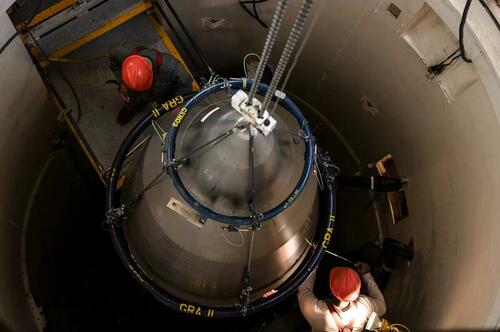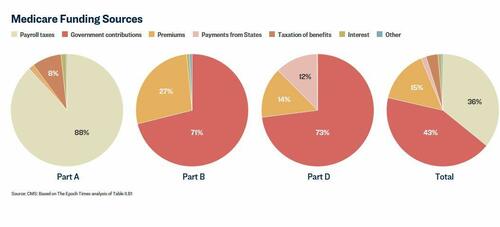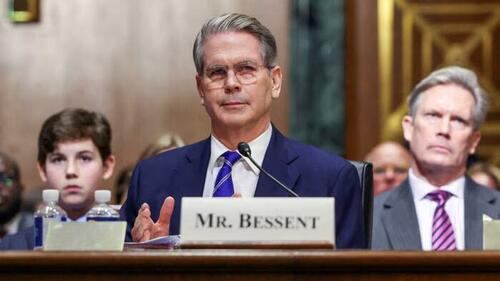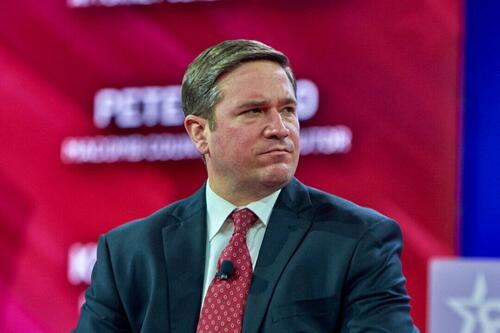Authored by Victor Davis Hanson via American Greatness,
President Trump recently gave a video talk to the World Economic Forum (WEF) assemblage in Davos.
He expressed fondness for Europe. He praised many for their attendance – and then tore into the evils of hyperregulation, high taxes, radical environmentalism, and the DEI/ESG commissariat of both the prior Biden administration and indeed the European Union.

One might have thought the attendees’ heads would have exploded when Trump referred to oil as “liquid gold.”
And he topped that by referring to the venerated Green New Deal as the “Green New Scam.”
“I terminated the ridiculous and incredibly wasteful Green New Deal—I call it the ‘Green New Scam,’ withdrew from the one-sided Paris Climate Accord, and ended the insane and costly electric vehicle mandate.”
But then a strange thing happened.
The questions from international bankers and financiers that followed were not all that critical. In fact, one could characterize them as curious and carefully encouraging.
So, what prompts the polite European reception to such green and economic heresy?
A careful hearing of Trump’s entire speech would reveal it was not confrontational as much as aspirational. He was trying to envision a new European partnership—albeit one under American leadership.
“Under our leadership, America is back and open for business . . . So, you know I’m trying to be constructive because I love Europe. I love the countries of Europe.”
The U.S. economy has grown to nearly twice the size of the European Union’s since its inception more than two decades ago. Indeed, over 20 years, the gross domestic product of both was roughly comparable.
European energy costs are constantly soaring, especially given radical green restrictionism and the disruption of the Ukraine War.
There is further European recognition that their economies, like those of Japan, South Korea, and Taiwan, hinge on American policies, economic, cultural, and social—and especially access to U.S. markets and consumers.
In this regard, Biden’s hard pivot to green globalism, fiery rhetoric about eliminating internal combustion engines, natural gas, and gasoline fuels, coupled with woke/DEI policies, proved not just disastrous at home; it also weakened the position of Euro realists abroad.
During the Biden years, Western allies abroad felt they had to fall in line with a strange, quirky new America.
Under Biden, the U.S. seemed to rush well leftward of even Europe—undermining European traditionalists, free-marketers, and economic and cultural conservatives who had been slowly gaining ascendance.
The wounded European money people at Davos were essentially saying to Trump that socialism may be an affordable, temporary boutique diversion in traditional capitalist America. But in an already inert, static, neo-socialist Europe, such an American hard shift to the left has proved disastrous.
So, it was in such a Davos moment that the global financial grandees were politely stunned at Trump’s call for a new golden age of American-led, freer market capitalism.
He promised not just to ensure lower interest rates, fiscal sobriety, fewer regulations, lower taxes, smaller government, and less state intervention in the economy, secure borders, and an end to illegal immigration. He went further to promise that these methods would ensure greater Western prosperity, security, and freedom, both American and European.
Trump trashed past American censorship, political orthodoxies, deficit spending, inflation, and high interest. He summed up the Biden four-year detour as culpable and wrongheaded.
“President Biden totally lost control of what was going on in our country.”
Stranger still, Trump located his pitch in ecumenical terms—of a strong U.S. seeking to help Europe reemerge to fulfill its natural potential.
Indeed, it was past time for the proverbial American and European “West” to stick together in a dangerous economic world of Chinese mercantilism, Russian aggression, and a new political and military axis of China, Russia, Iran, and North Korea—with countries like India and Turkey keen to see which alignment comes out on top.
Most of the bankers at Davos, in fact, wished Trump to double down on his promises.
Patrick Pouyanné, CEO of TotalEnergies, was not worried about Trump’s grandiose plans to expand fossil fuel production. Instead, his concern was only whether Trump could guarantee Europe could buy lots of his gas.
When he asked Trump point-blank whether he would honor his promise to ship massive amounts of liquid natural gas to Europe, Trump gushed back, “I would make sure that you get it. If we make a deal, we make a deal; you’ll get it.”
Another European banker apparently was also worried not about too much Trumpism but apparently not enough:
“We very much welcome your focus on deregulation and reducing bureaucracy. So, my question is: What are your priorities in this regard, and how fast is this going to happen?”
How fast?
Trump’s veritable messaging is now something like “Make Europe Great Again” (MEGA)—and most certainly not the old Obama idea that the US is merely one unexceptional nation, equal to all others.
Nor is Trump’s vision anything like the Biden effort to absorb failed European ideas about taxes, regulation, borders, and energy and then amplify such dreary statism with an American veneer—and boomerang the disastrous agenda back across the Atlantic.
Instead, the Trump idea is to make Europe and the U.S. both stronger economically and militarily. He wants to supercharge the U.S. economy and offer Europe avenues to join the ride.
In that regard, Trump’s Davos speech was the foreign policy counterpart to his domestic appeal to tech giants like Elon Musk, Jeff Bezos, Mark Zuckerberg, and the CEOs of Apple, Google, and other Silicon Valley conglomerates.
Under Biden’s growing statist octopus, its tentacles were starting to reach out and wrap around his once-loyal multibillionaire supporters—in order to strangle them.
They were always, of course, somewhat uneasy about Biden’s tax increases, redistributionist multi-trillion-dollar deficits, hyperinflation, and resulting high interests.
But what now terrified them was the increasing candor of the envisioned Biden eight-year agenda. Joe, in his role as a waxen effigy, would supposedly continue the ‘ol’ Joe from Scranton’ cover to facilitate another four years of an even harder Bernie Sanders/Elizabeth Warren/Squad/Obama socialist blueprint.
In other words, the neo-socialist Biden government would not just take profits from them on the back end with taxes and fees. But now it would also restrict and control on the front end what an entrepreneur would be allowed even to do—and how, when, and where he could innovate to make products and profit as he thought best.
Implied—and indeed feared—was that an army of thirty-something zealous, know-nothing government ideologues and bureaucrats would divide up business concessions. And they would offer slices of allotments to tech lords, based on their own fealty to the administration and their hard-left credentials.
So future tech winners and losers would not be determined by talent or market successes but by ideological purity—the usual historical framework where toadies, the mediocre, and the status quo triumph over mavericks, the fearless, and the unorthodox.
So, finally the tech giants, like the vestigial Euro capitalists, figured that Trump would unleash their animal spirits—and in a way more radically than any prior president.
The aim would not merely be to enrich them. He would also enlist them to make their countries preeminent in 21st-century globalist arenas such as biotech, artificial intelligence, cryptocurrency, cyberwarfare, drones, and lasers.
Read Trump’s Davos speech and the subtext is that the only impediment to Western success is Western fear and loathing of it.
Trump counts on the excitement of a shared adventure to free the West from its crabby naysayers as a moral and uplifting experience far preferable to the current nihilist slouching to statism and stagnation.













